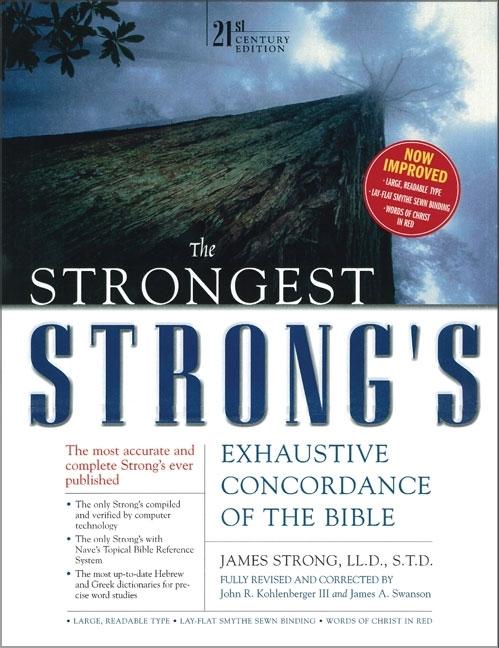

#STRONG ACCORDANCE HOW TO#
If you have a teenager (or even younger) in your home, buy them one of these and show them how to use it. Strong's is very easy to use and you can literally open it up, thumb around in it, and become "self-taught" in minutes.
#STRONG ACCORDANCE FULL#
If you are not familiar with using a full reference size concordance, don't be put off by fear. I own a huge Young's Concordance, and even that publication includes cross references to Strong's numbers. Many study bibles and reference publications include cross references to Strong's numbering system. The Strong's (we use the Strong's Exhaustive Concordance edition) seems to be the gold standard in this area of publication. But the Strong's helps, both with sorting out error and just simply understanding original language intent and meaning. Well, the same is true of your KJV (shocking, huh?). For example, would you argue that the thousands of new bibles that we are shipping overseas now days in the Chinese or Arabic tongue are translated perfectly, clearly, and without error, by holy inspiration of God? Probably not, but they are GOOD ENOUGH and will serve their purpose well. However, would you believe that ALL (including the KJV) English translations contain erroneous, or just sometimes ambiguous or weak, word translations? There are a variety of reasons for this and the mistakes or weaknesses were not necessarily inserted with evil intent. An important idea in my opinion - as it is stated within Scripture that they were given by inspiration of God, thus, it is widely held that they are without error (when this statement was penned by the Apostle Paul, he was directly referring to the Hebrew scriptures, or, "Old Testament"). There are myriad other things you can do with a concordance as you become familiar with it. In some cases you can use under instead of in.

Try to ensure that you use the right phrase in the right context. It is common that people use according to when they should use in accordance with. you could quickly find John 3:16 (I usually use a palm-sized Franklin Electronic Bible for this purpose). In accordance with §12 of Ms Horvath’s employment contract, she is employed for a fixed period of time 3 years. For example by looking up "begotten", or "world", or "loved". Very handy for locating a chapter/verse that you can't fully recall. Another basic function, the concordance will allow you to select a word and locate every place in the Bible where that word is used. Functions: In its most basic usage, the concordance allows you to select any word in your Bible, and see what that original word was in Hebrew or Greek, and what it means in that language. Incorporating a comprehensive concordance into your bible study will revolutionize the whole experience for you. Big mistake! As another reviewer suggested, you should buy one of these right after you purchase your Bible. I didn't own or use one of these until I was in my 40's. James Strong, a professor of exegetical theology from Drew Theological Seminary in the late nineteenth century. If you don't own/use a full reference size concordance currently, please read this.


 0 kommentar(er)
0 kommentar(er)
